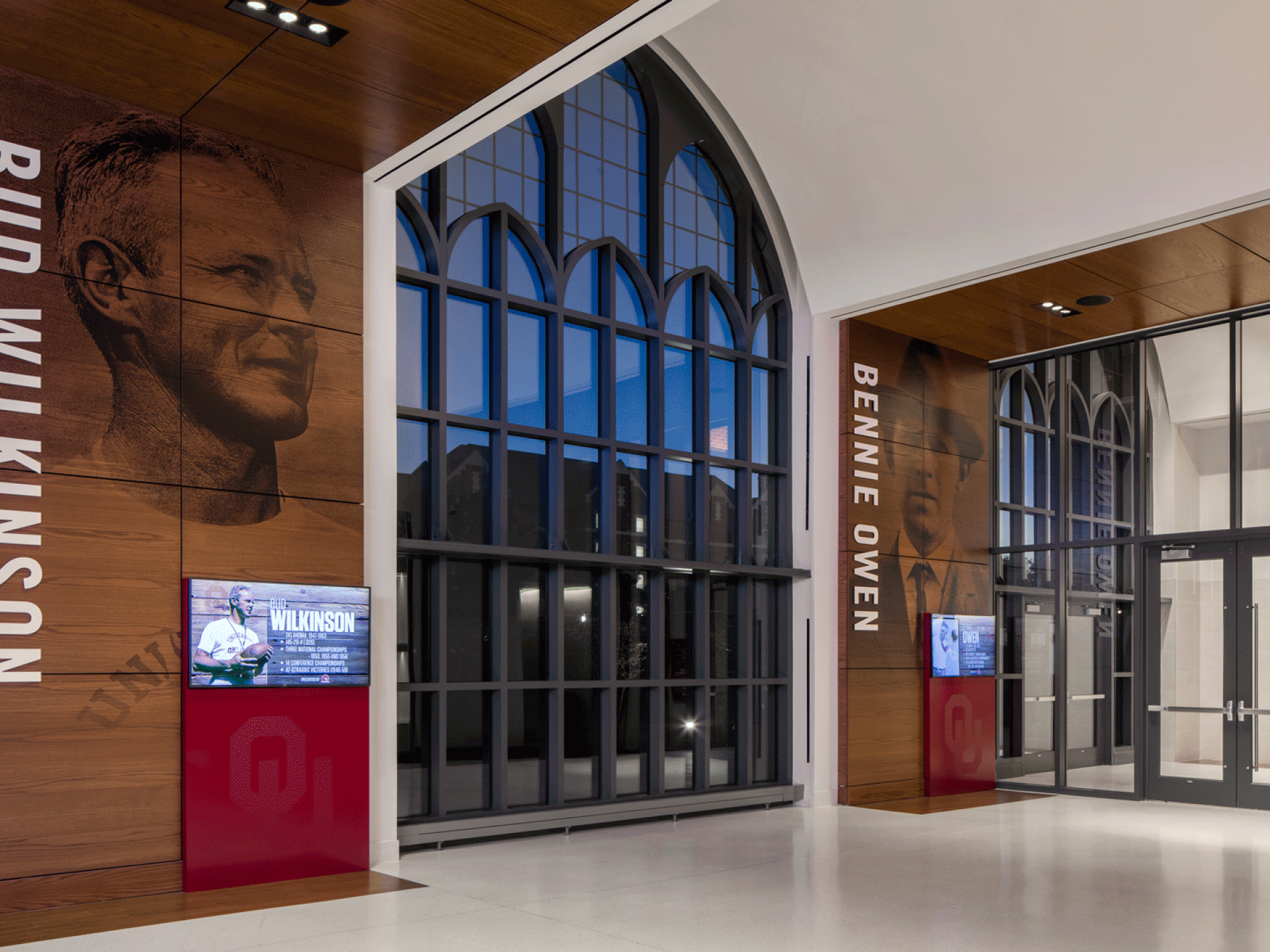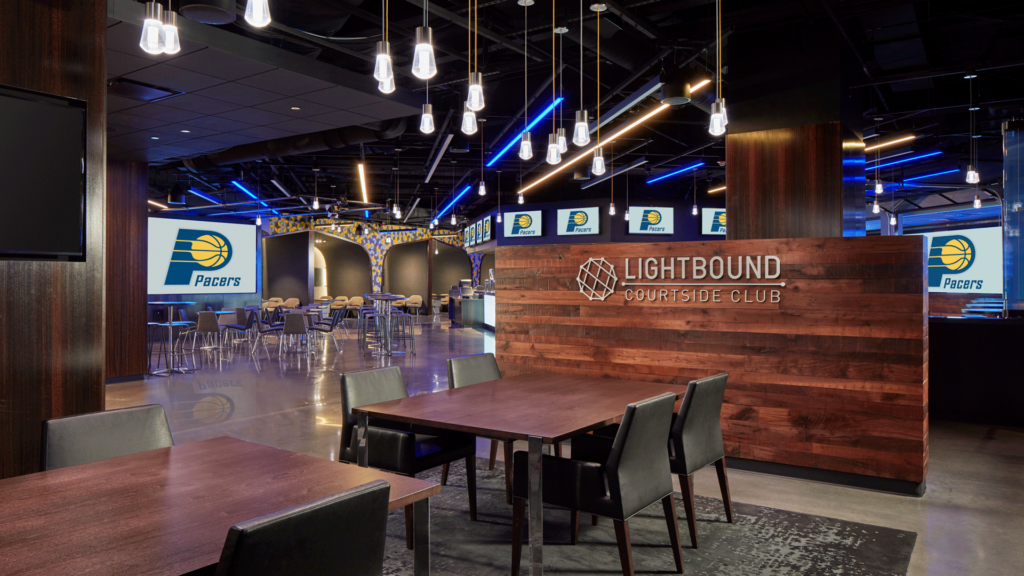October 11, 2018
The Offseason Renovation Playbook

Originally published in the Fall 2018 issue of SEAT Magazine
Keeping your facility’s offerings fresh in between seasons comes with a special set of challenges. At the forefront of these is time. Your planning may start well before the final whistle blows, but execution can’t often begin until the season comes to an end. Time compounds all the challenges you face in a typical renovation:
- Stakeholder buy-in
- Three-way coordination between the client, designer and builder
- Executing on the vision
At Populous, we’re fortunate to have worked on thousands of offseason renovations over the years. In that span of time, we’ve picked up on the finer points of project design and delivery. Before we share some of those learnings acquired over the decades, here’s why updating your spaces regularly is so vital.
Why hospitality updates matter

Imagine your favorite restaurant. If it’s an old favorite, you probably cherish the familiarity. Its charm lies in its consistency. Now imagine that restaurant charged a hefty cover each time you visited. How would your expectations shift?
This is the value equation your ticketed guests subconsciously calculate every time they step inside your premium space. Operations executives like Mel Raines of the Indiana Pacers think about it often. In 2016, Raines and the Pacers unveiled two renovated premium spaces at Bankers Life Fieldhouse: The Lexus Loft and LightBound Courtside Club. Within the first six months of the The Lexus Loft’s opening, all 14 of its loge boxes sold out. In the LightBound Courtside Club’s first season, meanwhile, food and beverage sales saw increases.
“Renovating these spaces during the Pacers offseason while operating the facility with Indiana Fever games and other events at Bankers Life Fieldhouse was challenging,” says Raines. “But it was well worth it in terms of ROI and keeping our guests’ experience fresh.”
Repeat visitors, the thinking goes, will visit your venue upwards of 40 or 50 times a year. After a handful of years, the experience will inevitably start to feel a bit stale. With the rise of mixed-use entertainment districts surrounding major venues, fans have plenty of food and beverage options for their pre- and post-game dollars. That’s why we recommend renovating club spaces and the like, to some degree, every few years. Many of our clients report seeing a return on those investments in 18-30 months.
Why team space updates matter

Switching from hospitality spaces to team areas like locker rooms, challenges include wear and tear and meeting evolving needs. Whether it’s strategic material choices or integrated systems to control humidity, we’ve learned from previous experience how to make a locker room as durable and functional as possible. Just like ticketed guests, however, your team’s players care about more than function. Training spaces serve as a home away from home for professional athletes, after all. When free agency rolls around, first impressions matter.
We’ve incrementally renovated the Buffalo Bills’ ADPRO Sports Training Center each offseason since 2014, including those currently under design for April 2019 completion. Updates have included tripling the size of the team locker room and existing weight room while adding new training and recovery areas to create a best-in-class sports performance and science center. The upgrades haven’t stopped there, however.
“The key was designing a holistic experience from start to finish,” says Kelly Kerns, my Populous teammate and design principal on the project. “From the two-story glass atrium entry lobby to the new dining center, we left no part of the player’s journey untouched.”
Solutions to your renovation headaches
You know you need to renovate, but how do you go about getting it done quickly – and done right? Think of the typical design-bid-build process as an assembly line. The client provides input. The designer helps create a vision. That design goes out to bid. Rinse and repeat until the contractor finally builds.
There’s nothing inherently wrong about this sort of linear approach. The hitch is that by the time you’ve made it through one cycle, a month or more has run off the clock. For an off-season renovation, especially a last-minute one, a month is everything.
Through the course of our experiences, we instinctively started to do things differently. We incorporated cost estimators and construction management advisors into the process at the onset. They help us price out drawings and flesh out a schedule before the first design presentation. The difference is this: the first concept you see from us is one that a) protects your brand’s integrity and b) can be confidently built within your budget.
Design Build becomes a way of thinking

By embracing the role of trusted advisor and the responsibility that comes with it, we noticed something about the Populous process: it was starting to resemble a design-build delivery. All of the characteristics were there:
- Proactive thinking and coordination
- Nurturing relationships and chemistry with builders and manufacturers
- Safeguarding the client’s brand and reputation through strategic design choices
All that was missing was the typical design-build contract. The more we talked with clients, the more we saw a market need for a turnkey approach to targeted offseason renovations. As a result, this summer we launched a new standalone service: Populous Design Build.
The delivery method makes sure that designer and builder put their heads together from day one. It engages other key partners on day one, from manufacturers and craftsmen to the furniture procurement agent.
Is Design-led Design Build right for you?
- Is the timeline to execute my renovation measured in months instead of years?
- Is there a targeted scope of work focused on one or a few spaces?
- Does my brand’s reputation stand to benefit or suffer from the project’s outcome?
For an example of why that’s important, look down the next time you’re in a hospitality space. Guests may take the floor they walk on for granted, but materials such as specialty tile and carpet can set a project back weeks if not sourced and secured well in advance. If a local designer lacks the knowledge of which materials stand up to high-traffic areas, that can compound the problem down the road.
As designers, we’re charged with blending form with function. We need to be proactive in understanding the pros and cons of our design recommendations. We draw from a wealth of knowledge at Populous that goes back decades. That two-way understanding of both the big picture and small details is crucial when up against the clock on a project. It inspires confidence and quick decisions by stakeholders. It also builds trust with build partners.
Experience is key, even on relatively smaller-scale projects like offseason renovations. The next time you’re facing one, stay calm and stick to the playbook. One trusted advisor goes a long way in navigating short timelines.
Lorem ipsum dolor sit amet consectetur, adipisicing elit. Non facere corporis et expedita sit nam amet aut necessitatibus at dolore enim quis impedit eius libero, harum tempore laboriosam dolor cumque.
Lorem, ipsum dolor sit amet consectetur adipisicing elit. Illo temporibus vero veritatis eveniet, placeat dolorem sunt at provident tenetur omnis, dicta exercitationem. Expedita quod aspernatur molestias eum? Totam, incidunt quos.
